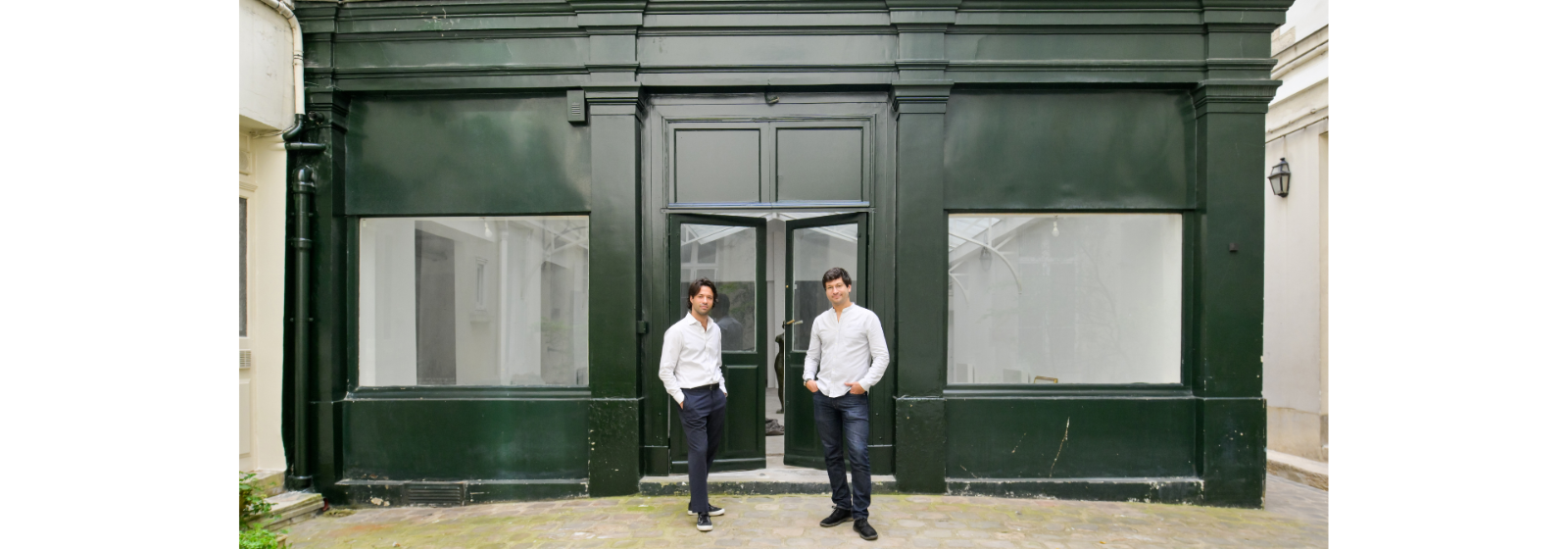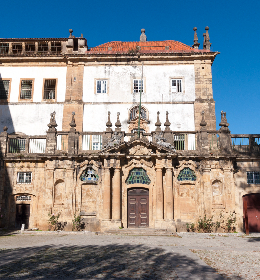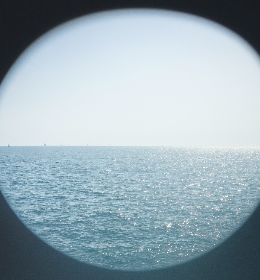
Exhibition view Judit Reigl - Convulsion with Fire, Dina Vierny gallery, 53 rue de Seine. Courtesy Galerie Dina Vierny © Romain Darnaud.
A muse and model of Aristide Maillol, Dina Vierny (1919-2009) opened her gallery in 1947 at 36 rue Jacob, on the advice of Henri Matisse. The site, formerly owned by a bougnat (a coal merchant), was transformed by architect Auguste Perret, already known for designing one of Katia Granoff's first galleries on Boulevard Haussmann in 1926. Today, the gallery on rue Jacob has preserved its signature woven wooden panels installed by Perret, a defining element of the place. In her early years, Vierny could count on the advice of Jeanne Bucher, another art dealer since 1925. The decision to take over the rue de Seine space, occupied by the Bucher gallery for nearly six decades, is rich in symbolism.


Exhibition view Judit Reigl - Convulsion with Fire, Dina Vierny gallery, 36 rue Jacob. Courtesy Galerie Dina Vierny © Romain Darnaud.
Vierny presented and defended the work of her contemporaries (Serge Poliakoff, Henri Laurens, Serge Charchoune, Fahrelnissa Zeid, sculptors Émile Gilioli and Robert Couturier, etc.), but also naïve artists (Séraphine de Senlis, André Bauchant, Camille Bombois, etc.), and non-conformist Soviet artists (Erik Bulatov, Ilya Kabakov, Oscar Rabine, etc.). These historical artists of the gallery remain central to the gallery today. Olivier Lorquin, Vierny's eldest son, continued his mother's work, first at the gallery and then at the Musée Maillol (Dina-Vierny Foundation), which opened in 1995.

Judit Reigl, Écrire en masse - Comment faire danser le carré, 1965, oil on canvas, 230 x 269 cm. Courtesy Galerie Dina Vierny © All rights reserved.
Since 2021, Pierre and Alexandre Lorquin have remained faithful to their grandmother's artistic vision while championing a new generation of artists. Under their direction, the public has been able to (re)discover major artists of the century such as Robert Couturier and Judit Reigl, currently in the spotlight in the new 200 m² space on rue de Seine, recently redesigned by architect Simon Basquin.

Judit Reigl, Face à..., c.1988. Mixed media on canvas, 201 x 226 cm. Courtesy Galerie Dina Vierny © Jean-Louis Losi.
Titled "Convulsion with Fire", the retrospective celebrates the work of Hungarian-born Judit Reigl (1923-2020), who moved to Paris in 1950, where she crossed paths with her fellow Hungarian Simon Hantaï and met André Breton, who invited her to exhibit at L’Étoile scellée, his surrealist gallery opened in 1952. The exhibition is a retrospective of unprecedented scale of Reigl's work, bringing together some thirty works created between the 1940s and the 1990s, several of which have never been shown before.
At the rue Jacob location, visitors are introduced to Reigl’s early period, from her beginnings up to 1954: her Hungarian years, her surrealist period, and works exhibited in André Breton's gallery. Although Reigl was never part of the surrealist group, she embraced the "psychic and physical" automatism at the heart of their philosophy. With total freedom, she takes hold of the canvas and frees her gesture, transcribing her sensory and physical emotions.

Exhibition view Judit Reigl - Convulsion with Fire, Dina Vierny gallery, 53 rue de Seine. Courtesy Galerie Dina Vierny © Romain Darnaud.
She documents the body as if composing an inventory: "agglomeration, fusion, separation, attraction, repelling, growth, diminishment, transformation, mutation, explosion, implosion, dissolution. Desire, suffering, death, recommencement", serving as a manifesto of her work.
Exposition Judit Reigl, Convulsion with Fire, until 14 June in both spaces, then from 20 June to 19 July, Marcel·la Barceló, Still Waters Run Deep, rue de Seine.
Cover image: Pierre and Alexandre Lorquin in front of the new space at 53 rue de Seine, Saint-Germain-des-Prés, Paris, France. © Julio Piatti, 2024.









